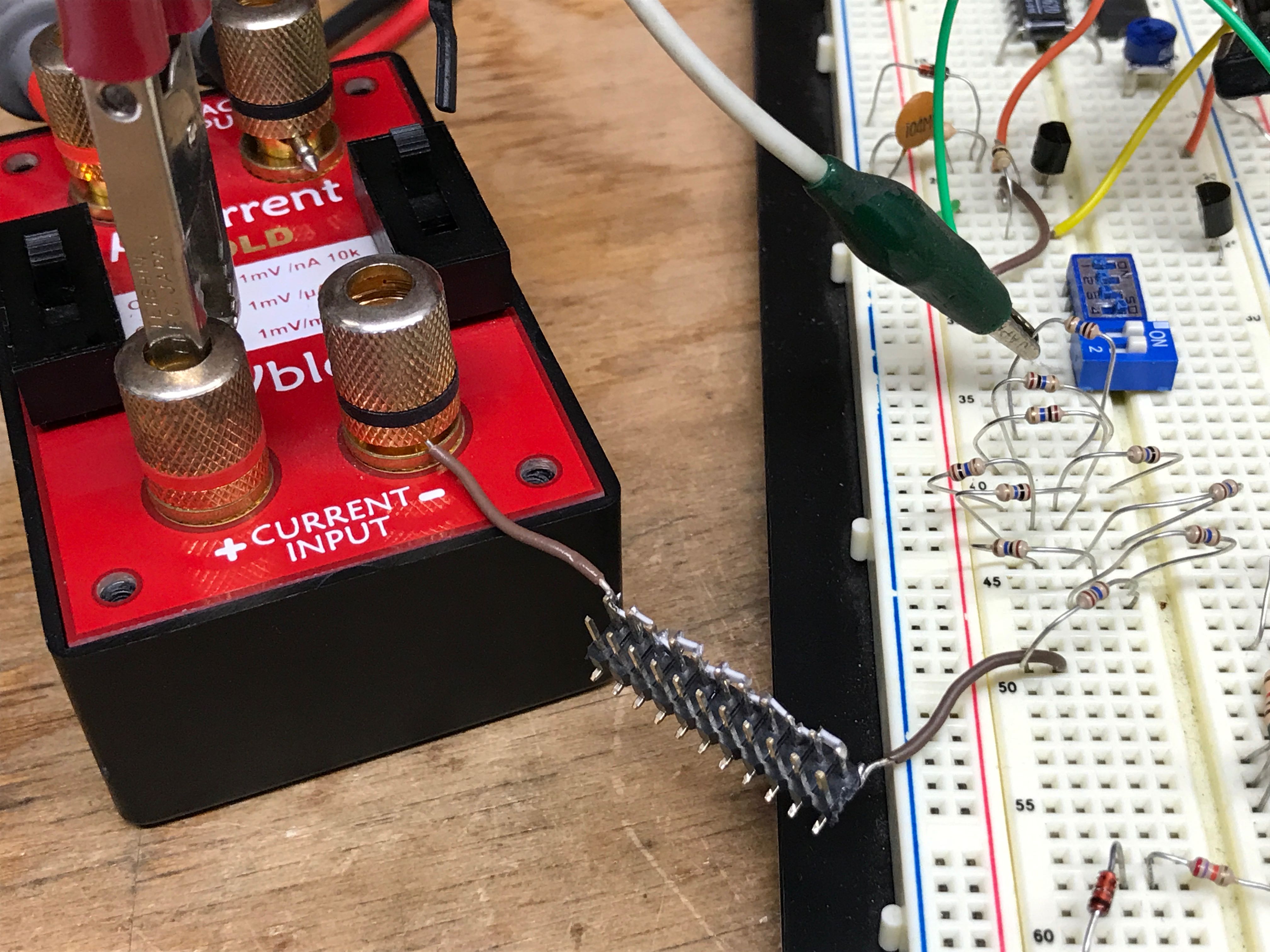The 0.1uF cap is the key to making the uCurrent usable. Or at least, it transforms your uCurrent into a nano-Current, which is why I wanted one in the first place. I don't care about AC, so the added capacitor solves my problem. Here are my test results with a ceramic radial lead capacitor installed externally atop the board:
TEST#1Voltage: 1.003V
Resistance: 99.00M-ohm
Measured Current: 10.06nA (using Fluke 8845A set to 1V range since I get OVERLOAD in the mA range for some reason)
Calculated Current: 1.003/99E6 = 10.13nA
Percent Error: 0.69% (very accurate!)
TEST#2Voltage: 1.002V
Resistance: 98.142M-ohm (SMD resistors, 10pcs)
Measured Current: 10.18nA (using Fluke 8845A set to 1V range since I get OVERLOAD in the mA range for some reason)
Calculated Current: 1.002/98.142E6 = 10.21nA
Percent Error: 0.29% (extremely accurate!)
TEST#3Voltage: 1.002V
Resistance: 197.142M-ohm (all my resistors in series, 20pcs)
Measured Current: 5.06nA (using Fluke 8845A set to 1V range since I get OVERLOAD in the mA range for some reason)
Calculated Current: 1.002/197.142E6 = 5.08nA
Percent Error: 0.39% (extremely accurate!)
After these tests I removed the radial lead 0.1uF capacitor and put a ceramic SMD version on the bottom of the PCB as shown in the photo below. I repeated TEST#3 and measured 5.07nA -- spot on!

I also added hot glue to the 4 corners of the button cell battery holder because that thing will break off over time if the battery is swapped in and out too often. That's because it appears to be held down to the PCB by only 2 solder points!
This photo shows my SMD resistor block in series with my axial lead resistors. And as you can see, despite my having used a breadboard and despite my having used a DC power supply instead of a battery, I still got very accurate results. But again, ONLY because I modded the uCurrent with a 0.1uF capacitor. BLESS YOU, FRANKBUSS!

I also swapped out the 270-ohm resistor at R4 for a 1k-ohm. Previously, there was 2.2mA flowing through the LED, but now there is only 0.9mA, and the LED is still quite bright:
 Suffice it to say, I am very pleased at this outcome!
Suffice it to say, I am very pleased at this outcome!